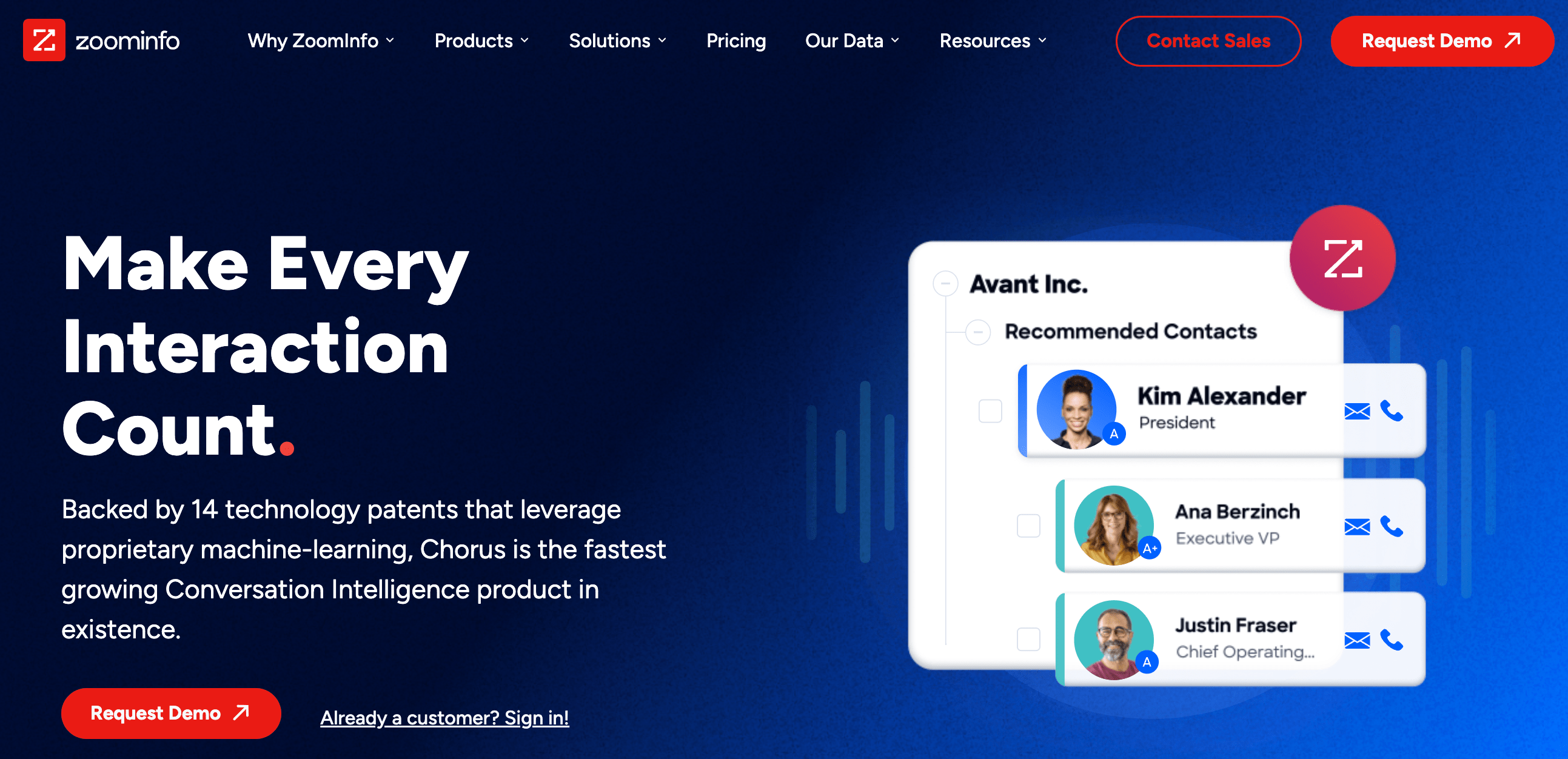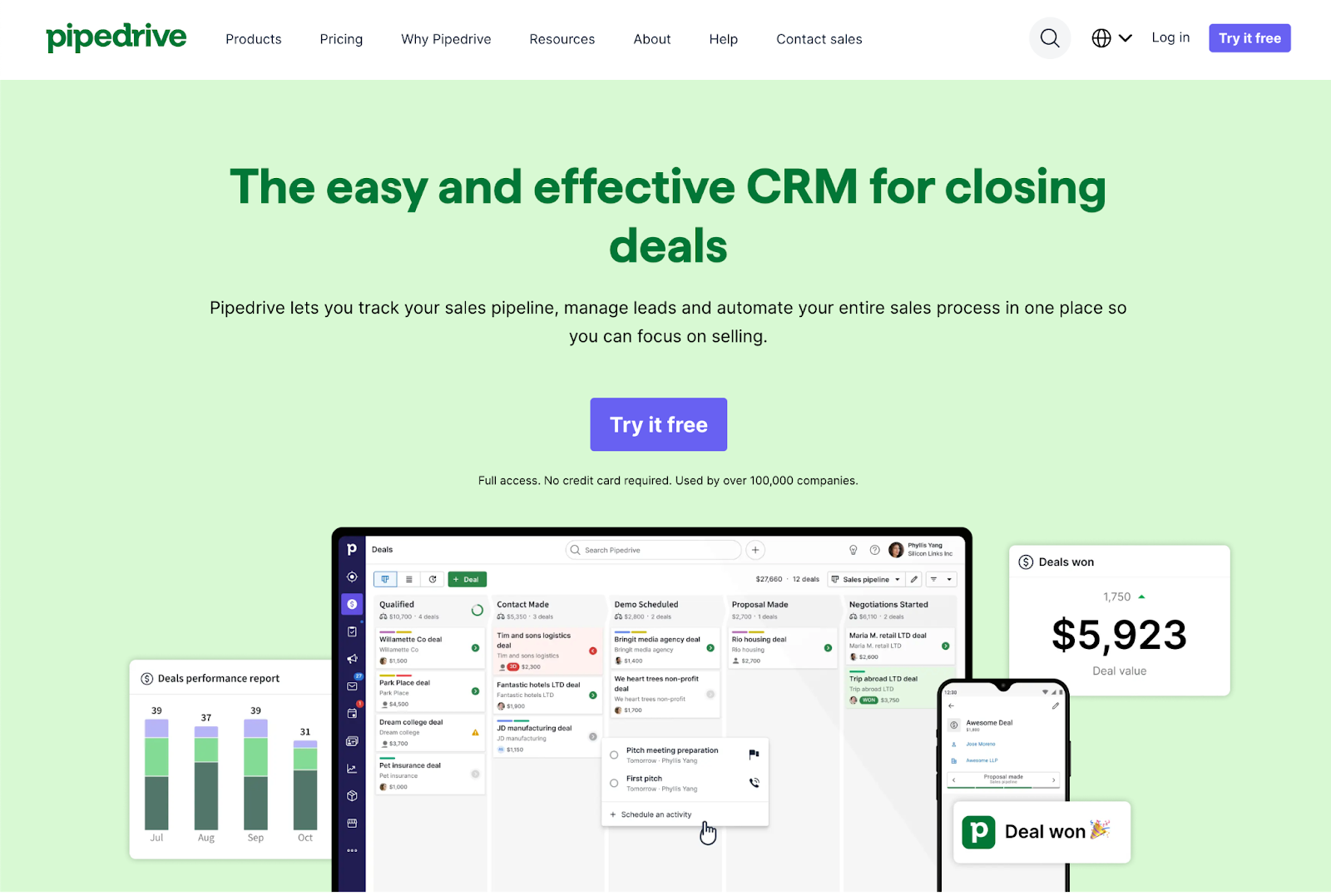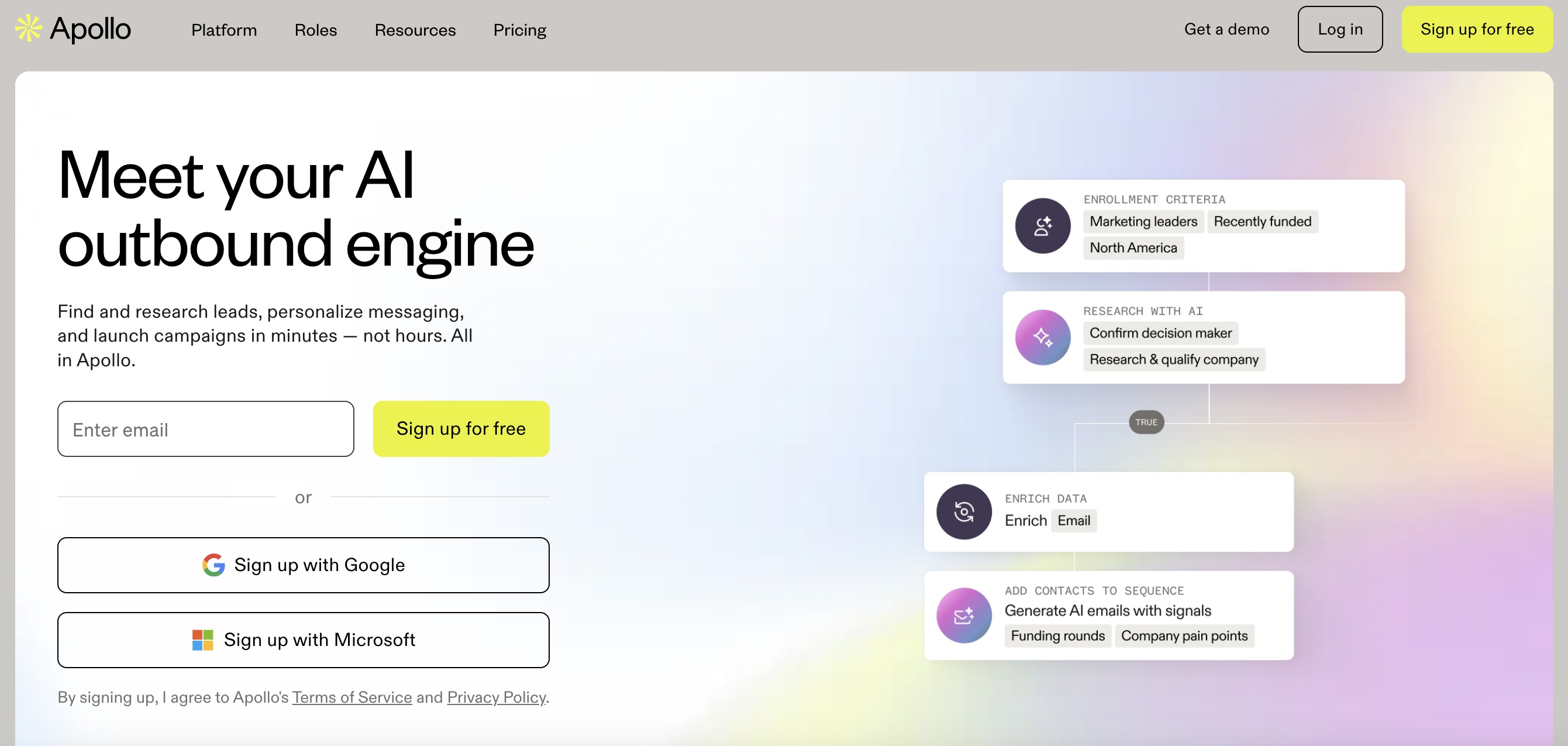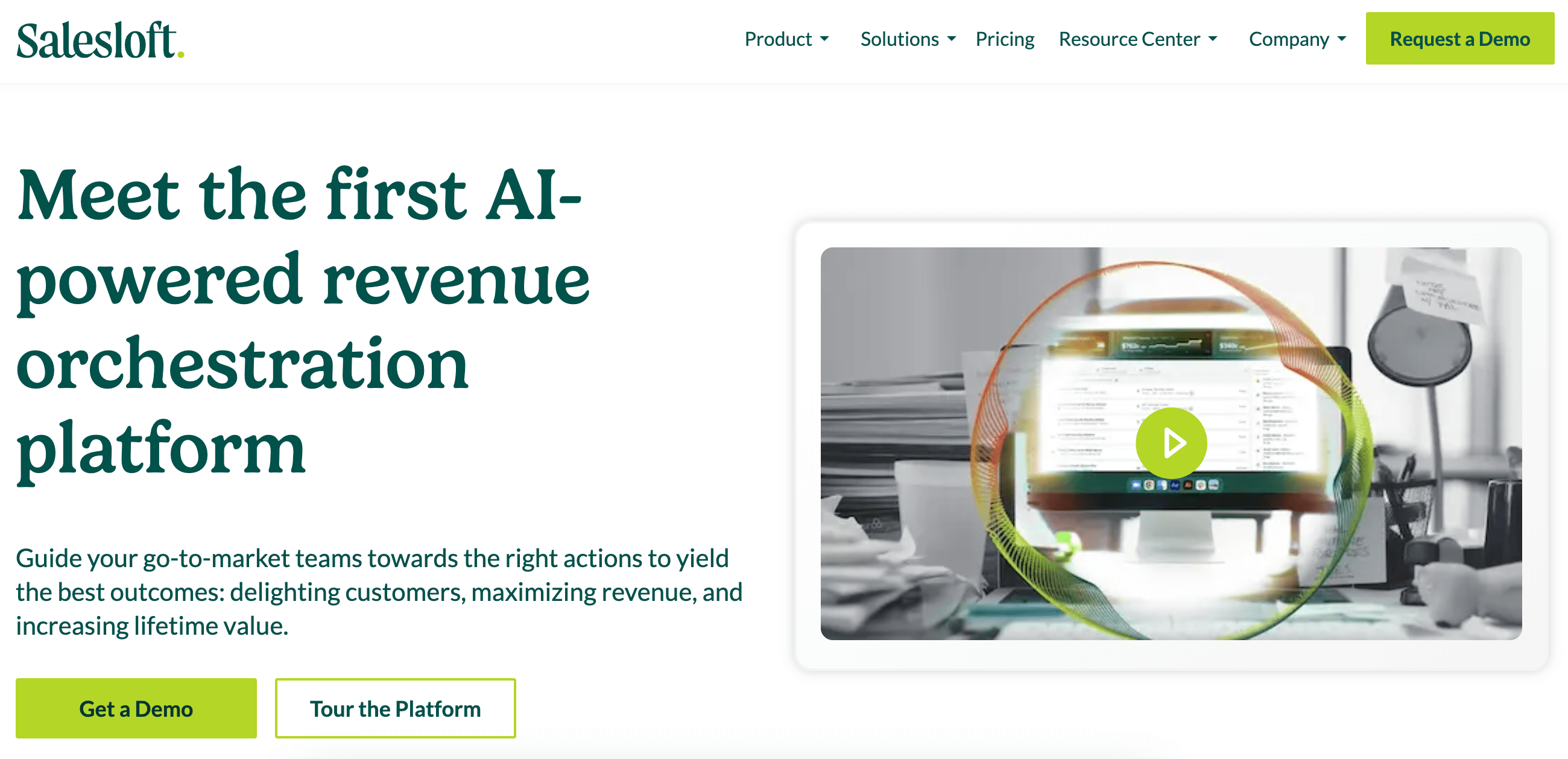What You Need to Know About Outbound Sales Tools in 2025
Outbound sales tools are essential components of modern sales strategies, enabling teams to enhance efficiency, streamline processes, and achieve better results. As 2025 ramps up, these tools are poised to play an even more critical role in sales success.
The right set of tools empowers sales professionals to optimize every aspect of the outbound sales process, from prospecting and lead generation to engagement and closing. Innovations like AI for sales enable teams to automate repetitive tasks, gain valuable insights, and personalize outreach at scale.
This comprehensive guide delves into the world of outbound sales software, exploring key benefits, essential features, and best practices for implementation. Sales managers and SDRs seeking to upgrade their tech stack, or SaaS business owners or startup CEOs building an outbound sales strategy, will find actionable insights and valuable resources that make their outreach campaigns scalable.
Embark on the journey to outbound sales excellence in 2025!
What are Outbound Sales Tools?
Outbound sales tools are software solutions designed to empower sales teams to reach and engage potential customers. These tools serve as the backbone of modern outbound sales strategies, providing a centralized platform for managing leads, automating tasks, and improving communication and deliverability at every stage of the sales process.
Sales teams must manage an immense volume of data daily. From lead lists and contact information to email templates and call scripts, the amount of information can be overwhelming. Outbound sales tools offer a way to organize and streamline this data, ensuring that sales reps have access to the information they need when they need it.
These tools go far beyond simple data management. They offer a range of features designed to automate repetitive tasks and improve efficiency. For example, many outbound sales software include email automation capabilities, allowing sales reps to schedule and send personalized emails to leads at scale. Others offer call recording and transcription services, making it easier to review and analyze sales calls for training and improvement purposes.
Outbound sales tools also provide valuable sales intelligence. By tracking key metrics such as cold email open rates, cold call duration, and conversion rates, these tools help sales teams identify areas for improvement and optimize their strategies over time. Studies have shown that CRM applications can help increase sales by up to 29%.
With so many tools available, it can be challenging to know where to start. The following sections explore some of the key features to look for in an outbound sales tool, as well as best practices for implementation and optimization. Whether you're a seasoned sales pro or just starting, these insights will help you maximize your outbound sales efforts in 2025 and beyond!
Benefits of Outbound Sales Tools
Outbound sales tools have the ability to change the way sales teams operate, unlocking a host of benefits that directly impact the bottom line.
Outbound sales tools can significantly increase sales productivity and efficiency. Automating repetitive tasks such as email outreach and lead nurturing frees up sales reps to focus on what they do best: building relationships and closing deals. This increased efficiency can lead to a significant boost in sales performance, with some organizations reporting up to a 50% increase in productivity after implementing outbound sales tools.
The benefits extend beyond increased efficiency. Outbound sales tools also provide valuable insights through advanced analytics and reporting capabilities. Tracking key metrics such as email open rates, call duration, and conversion rates helps sales teams identify areas for improvement and refine their strategies over time. Some also provide A/B testing capabilities, which help sales teams figure out the plans and approaches that are working. This data-driven approach enables organizations to make informed decisions based on real-world insights rather than guesswork or intuition.
The impact of these tools is not just theoretical—it has been proven through real-world case studies and statistics. For example, a recent study found that 81% of sales leaders predict AI automation will have a significant impact on sales processes over the next five years. Another study found that organizations using outbound sales tools saw a 13% increase in sales productivity and an 18% increase in revenue per sales rep.
These statistics demonstrate the significant impact of these automation tools on sales performance. Using these tools enables organizations to gain a competitive edge in an increasingly crowded marketplace, positioning themselves for success in 2025 and beyond.
It is important to note that implementing outbound sales tools is not a one-size-fits-all proposition. To truly maximize the benefits of these tools, sales teams must take a strategic approach to implementation and optimization. The following sections explore key considerations for selecting and implementing outbound sales tools, as well as best practices for ongoing optimization and success.
CRM Integration
A critical component of any outbound sales tool is its ability to integrate with Customer Relationship Management (CRM) systems. CRM integration allows for the seamless management of customer relationships and data, providing sales teams with a complete view of their prospects and customers.
Integrating outbound sales tools with CRM systems enables sales reps to access a wealth of information about each prospect or customer, including contact data, purchase history, and previous interactions with the company. This information is invaluable for crafting personalized outreach and building meaningful relationships with potential buyers.
The benefits of CRM integration extend beyond data management. When outbound sales tools are integrated with CRM systems, sales teams can track every interaction with a prospect or customer, from initial outreach to final sale. This level of visibility allows sales reps to stay on top of their pipeline and ensure that no opportunities fall through the cracks.
CRM integration can also significantly enhance the ability to track and measure the success of outbound sales efforts. Analyzing email campaign data on email open rates, response rates, and conversion rates helps sales teams identify which tactics are working and which need refinement. This data-driven approach can lead to better outcomes and higher revenue over time.
The impact of CRM integration extends beyond outbound sales. This is especially true of platforms that use AI to gather and analyze information. You can read more on AI impact on sales prospecting and learn how AI and CRM platforms are transforming sales growth across entire organizations
When sales teams leverage AI-powered sales prospecting tools in conjunction with CRM data, they can identify high-quality leads and prioritize their outreach efforts accordingly through segmentation. This targeted approach to prospecting can lead to higher conversion rates and faster sales cycles, ultimately driving revenue growth for the organization as a whole.
It goes without saying that achieving seamless CRM integration requires careful planning and execution. Sales teams must work closely with their IT departments to ensure that outbound sales tools are properly integrated with CRM systems and that data is being synced accurately and in real time.
Additionally, sales teams must use their CRM data effectively to inform outbound sales strategies. This may require additional training and support to help sales reps understand how to leverage CRM data to craft more effective outreach and build stronger relationships with prospects and customers.
Despite these challenges, the benefits of CRM integration are clear. Leveraging the power of CRM data in conjunction with outbound sales tools enables sales teams to drive significant improvements in productivity, efficiency, and revenue growth through a concerted multi-channel outreach. CRM integration should be a top priority for any organization looking to optimize outbound sales efforts this year and beyond.
The Best Outbound Sales Tools
1. Hubspot

HubSpot is an all-in-one customer platform designed to help businesses of all sizes grow better by connecting their marketing, sales, customer service, content management, and operations. It provides a suite of powerful tools that work together seamlessly to attract, engage, and delight customers.
This platform is ideal for businesses looking to streamline their go-to-market strategies, improve customer relationships, and drive growth. HubSpot solves common challenges related to lead generation, sales pipeline management, customer support, and data management by providing a unified solution.
Standout Features
- Marketing Hub for email marketing, ad management, landing pages, and analytics
- Sales Hub for team collaboration, deal tracking, and sales automation
- Service Hub for customer support, ticket management, and knowledge base creation
- Content Management System (CMS) for building and optimizing websites
- Operations Hub for data syncing, custom workflows, and ensuring data quality
Pros
- User-friendly interface with an advanced dashboard
- Powerful all-in-one capabilities
- Easy to set up and navigate
- Efficient for handling communication
Cons
- Some performance issues and crashes reported
- CMS functionality may leave something to be desired
Pricing
Unfortunately, they do not have pricing publicly disclosed. You'll likely need to ask for a demo if you want more information about pricing. Visit their homepage: https://www.hubspot.com.
2. Zoominfo

ZoomInfo is a powerful go-to-market intelligence platform designed to help B2B companies accelerate their growth. It provides comprehensive data and AI-powered tools that enable sales, marketing, and recruiting teams to identify, connect with, and close their ideal customers more efficiently.
One of ZoomInfo's key strengths is its vast database of accurate and up-to-date company and contact information. Users can access detailed profiles, direct dial phone numbers, email addresses, and organizational charts to improve their outreach effectiveness. The platform's advanced search capabilities allow teams to quickly identify their ideal customer profiles and build targeted prospect lists based on criteria like company size, industry, and technologies used.
Standout Features
- Advanced Search: ZoomInfo's advanced search allows users to find and filter potential customers based on detailed criteria like company size, industry, technologies used, and more.
- Buyer Intent Data: The platform offers real-time buyer intent signals, allowing users to identify companies actively researching relevant topics or solutions.
- Contact and Company Data Enrichment: ZoomInfo provides comprehensive and up-to-date contact and company information.
- Sales Automation: The platform includes sales engagement tools that allow users to automate and scale their outreach efforts.
- Website Visitor Tracking": ZoomInfo's WebSights feature allows users to identify companies visiting their website, even if they don't fill out a form.
Pros
- User-friendly interface and easy navigation
- Comprehensive and accurate data for sales prospecting
- Effective for scaling go-to-market organizations
Cons
- Expensive pricing, especially for small businesses
- Aggressive sales tactics and commercial terms
- Some users report data accuracy issues in certain industries
Pricing
ZoomInfo offers several packages tailored to your business’s size and goals, but specific pricing in USD isn’t publicly disclosed. Costs are determined by factors such as the number of user licenses, level of data access, and credit usage for exporting contacts. Businesses looking for comprehensive intelligence, verified data, and seamless integrations with existing Tech stacks will find ZoomInfo especially appealing. For more details, visit: https://www.zoominfo.com/pricing
3. Salesforce

Salesforce is an all-in-one CRM platform designed to help businesses of all sizes grow faster and work smarter. By bringing together AI, data, and customer 360 apps on one integrated platform, Salesforce enables companies to streamline processes, gain valuable insights, and deliver exceptional customer experiences across sales, service, marketing, and more.
Salesforce is particularly well-suited for small businesses looking to level up their customer relationship management. The Starter Suite provides an easy-to-use, affordable solution that combines sales, service, and marketing tools in a single app. With features like lead and opportunity management, email marketing, service case management, and AI-powered analytics, small businesses can hit the ground running and see results from day one.
Standout Features
- Salesforce's core CRM functionality allows businesses to manage contacts, track opportunities, and nurture customer relationships.
- With AI capabilities like Einstein, Salesforce offers predictive analytics, automated lead scoring, and intelligent recommendations.
- Salesforce Service Cloud enables businesses to deliver personalized customer support across multiple channels.
- Salesforce Marketing Cloud provides tools for email marketing, social media management, and customer journey mapping.
- Salesforce offers robust reporting and dashboard capabilities, allowing businesses to visualize data, track KPIs, and gain actionable insights.
Pros
- Comprehensive CRM functionality
- Highly customizable
- Extensive integration capabilities
Cons
- Expensive, especially for small businesses
- Steep learning curve
- Can be overly complex for some users
Pricing
Salesforce provides multiple cloud-based CRM solutions that scale with your company’s growth. Pricing is typically per user, per month (billed annually), and ranges from entry-level tools to comprehensive enterprise offerings. It’s an ideal solution for businesses aiming to unify customer data, streamline processes, and utilize AI-driven insights. For the most accurate and up-to-date pricing, visit https://www.salesforce.com/pricing/
4. Pipedrive

Pipedrive is an intuitive sales CRM and pipeline management tool designed to help small to mid-sized sales teams close more deals. It centralizes customer data, automates tasks, and provides insights to optimize the entire sales process from lead to close.
The visual pipeline view is Pipedrive's standout feature, giving sales reps and managers a clear overview of their sales funnel. Drag-and-drop deal management and customizable stages make it easy to track opportunities and next steps.
Standout Features
- All lead and customer info is centralized
- The visual interface shows exactly where each deal stands
- Automation features streamline admin work
- AI tools prompt reps to take timely actions
- Reports and dashboards track key metrics
Pros
- Intuitive visual pipeline for easy deal tracking
- User-friendly interface and setup process
- Effective automation of sales workflows
Cons
- Some users may find advanced features lacking
- Potential learning curve for complex functionalities
Pricing
Pipedrive offers four main plans designed to fit the needs of individuals, small teams, and growing businesses. Its pricing ranges from budget-friendly to more advanced tiers, each adding valuable tools such as AI-powered insights, automation, and customizable lead management. The platform’s transparent costs make it attractive for sales teams aiming to streamline their processes. Learn more on their pricing page: https://www.pipedrive.com/en/pricing
5. Apollo

Apollo is a powerful AI-driven sales platform that helps B2B companies supercharge their outbound sales efforts. It's an ideal solution for sales teams and marketers looking to generate more qualified leads, engage prospects more effectively, and ultimately close more deals faster.
Apollo solves several key challenges faced by B2B sales organizations. Its AI Outbound Engine automates and optimizes sales outreach, enabling reps to connect with more of the right people at the right time. The Pipeline Builder provides much-needed structure and visibility into the sales process. The Call Assistant makes sales conversations more productive. Robust analytics give managers the insights they need to constantly refine their strategies.
Standout Features
- Apollo's AI Outbound Engine is a core feature that leverages artificial intelligence to optimize sales outreach.
- Pipeline Builder: The Pipeline Builder feature assists sales teams in managing and visualizing their sales pipeline.
- Call Assistant: Apollo's Call Assistant is designed to enhance the effectiveness of sales calls.
- Data and Analytics: Apollo offers robust data and analytics capabilities to help users make informed decisions.
Pros
- Intuitive and user-friendly interface
- Effective for sales outreach and follow-ups
- Time-saving automation features
- Extensive B2B lead generation capabilities
Cons
- Inconsistent data accuracy
- Limited third-party integrations
- Occasional performance issues during high usage
Pricing
Apollo offers four main plans, each billed in USD. The Free plan is ideal for individuals testing basic sales prospecting, while Basic, Professional, and Organization plans cater to growing teams with increasingly advanced needs and higher credit limits. Perfect for businesses seeking robust leads, outreach tools, and AI-enabled data enrichment features to boost outreach and close more deals. Full details can be found at: https://www.apollo.io/pricing
6. LinkedIn Sales Navigator

LinkedIn Sales Navigator is a powerful sales tool that helps B2B sellers find the right prospects, engage effectively, and close more deals faster. By leveraging the vast professional data available on LinkedIn, Sales Navigator provides advanced search capabilities, lead recommendations, and valuable insights to help sales teams reach decision makers.
Sales Navigator is ideal for any B2B sales professional looking to build their pipeline and have more meaningful conversations with potential buyers. The tool solves key challenges like finding the right people to target, understanding buying intent, and engaging with prospects in a personalized way at scale.
Standout Features
- Advanced lead and company search with multiple criteria
- Automated lead recommendations powered by AI
- Ability to see and interact with extended networks
- Centralized account and contact management
- Detailed insights on leads and accounts for smarter outreach
- InMail credits to directly message prospects
- Seamless integration with many CRM systems
Pros
- Excellent networking and professional community-building tool
- Effective for creating databases of contacts and companies
- Great for prospect research and lead generation
Cons
- Some users find it provides only marginally more efficient prospect stalking
- Potential learning curve for maximizing all features
Pricing
- LinkedIn Sales Navigator offers flexible plans and pricing to accommodate individuals and sales teams of various sizes. The monthly and annual pricing for the Core and Advanced plans is publicly available, while the Advanced Plus plan requires requesting a custom quote. LinkedIn also provides a free trial, which is ideal for professionals evaluating powerful prospecting and lead management tools. For more information, visit the official pricing page: https://business.linkedin.com/sales-solutions/compare-plans.
7. Salesloft

Salesloft is a powerful revenue orchestration platform that enables sales teams to work smarter, engage buyers more effectively, and drive predictable revenue growth. By leveraging artificial intelligence and automation, Salesloft helps streamline sales workflows, prioritize high-impact activities, and provide actionable insights to improve sales execution.
The platform is well-suited for revenue leaders looking to optimize their sales processes, increase pipeline efficiency, and accelerate deal cycles. It solves key challenges related to sales productivity, opportunity management, forecasting accuracy, and buyer engagement.
Standout Features
- Cadence Management: Salesloft's Cadence feature allows users to create and manage structured workflows for sales outreach.
- AI-Powered Insights: The platform leverages artificial intelligence to provide actionable insights throughout the sales process.
- Deal Management: Salesloft's Deals feature offers comprehensive opportunity management capabilities.
- Conversation Intelligence: This feature captures and analyzes sales conversations to provide insights about buyers and sellers.
- Revenue Forecasting: Salesloft's Forecast feature transforms sales forecasting into a strategic action plan.
Pros
- Highly user-friendly and intuitive interface
- Efficient task management and contact tracking
- Effective dialer and cadence features
- AI-powered recommendations
Cons
- Potentially high cost
- Negative ROI for some users
- Time-consuming implementation for some
Pricing
- Salesloft does not publicly list specific pricing in USD, instead offering custom quotes and demos tailored to each business’s needs. Its packages are designed to handle everything from pipeline generation to conversation intelligence, making them appealing for fast-growing companies needing a robust sales engagement platform. The platform’s focus includes forecasting, opportunity management, and streamlined workflows, suitable for teams looking to boost productivity and revenue. To learn more, visit their pricing page: https://salesloft.com/pricing
To learn more, check out this conversation with Jen Allen-Knuth
Frequently Asked Questions (FAQs)
What are outbound sales tools?
Outbound sales tools are software solutions that help sales teams reach potential customers, manage leads, automate tasks, and improve communication throughout the sales process. They are essential components of modern sales strategies.
How do outbound sales tools benefit sales teams?
Outbound sales tools increase productivity, provide valuable analytics insights, and boost sales performance and revenue. They automate repetitive tasks like email outreach, freeing up reps to focus on building relationships and closing deals.
What are some key features to look for in outbound sales tools?
The best outbound sales tools should include robust lead management, automated sequences, email personalization, performance analytics, and seamless CRM integration. AI-powered capabilities are also increasingly important.
How do outbound sales tools integrate with CRM systems?
Integrating outbound sales tools with CRM allows for unified data management, tracking of every customer interaction, and enhanced ability to measure sales efforts. This integration is crucial for aligning outreach with deal stages and customer context.
What are the benefits of AI-powered outbound sales tools?
AI-powered outbound tools can significantly enhance targeting, personalization, and efficiency. They enable teams to create more relevant, effective outreach at scale, ultimately leading to higher conversion rates and revenue growth.
How do outbound sales tools improve sales productivity?
By automating time-consuming tasks like lead research, list building, and follow-up emails, outbound tools allow reps to connect with more prospects in less time. This automation drives meaningful productivity gains across the sales org.
What should I consider when evaluating outbound sales tools?
When assessing tools, prioritize seamless CRM integration, ease of use, robust automation and personalization features, and powerful analytics capabilities. Also ensure the tool can scale with your team and adapt to your specific sales processes.
How can outbound sales tools help with sales coaching and training?
Many outbound tools include call recording, email tracking, and detailed activity logging. Sales leaders can use this data to identify coaching opportunities, reinforce winning behaviors, and help reps replicate top performers' success.
Final Thoughts
Outbound sales tools have become an indispensable asset for modern sales teams looking to optimize their strategies and drive revenue growth. From CRM integration and sales automation to analytics and reporting, these tools offer a wide range of features and benefits that can help sales reps work smarter, faster, and more effectively.
With so many tools available on the market, it can be challenging to know where to start. Understanding the key components of outbound sales tools and how they can be leveraged to improve sales performance enables sales teams to make more informed decisions about which tools to invest in and how to integrate them into their existing workflows.
It is also a good idea to invest in a good GTM AI platform. They are invaluable for growing companies that have issues with keeping their go-to-market plans on course. This often overlooked issue, also known as GTM Bloat, can critically stunt the growth of any organization. With Copy.ai, you also get to improve your GTM Velocity, enhance your GTM AI Maturity, and you get unlimited access to a free tools site where you can explore several useful GTM tools.
Selecting the right outbound sales tools and integrating them effectively, along with other platforms like a GTM AI that protects the growth of your organization, can lead to significant improvements in sales performance. Streamlining processes, automating repetitive tasks, and providing valuable insights into prospect behavior and preferences help sales teams focus on what they do best—building relationships and closing deals.
However, outbound sales tools are just one piece of the puzzle when it comes to driving sales growth in 2024 and beyond. Sales teams must also focus on developing effective outbound sales strategies, building strong relationships with prospects and customers, and continuously refining their approach based on data and feedback.
We encourage readers to explore further resources on outbound sales strategies and best practices and to consider implementing some of the tools and techniques discussed in this article. Whether you're a seasoned sales veteran or just starting out in your sales career, there's always room for improvement and growth.
Finally, sales teams can gain a significant competitive advantage by leveraging AI-powered tools and techniques to enhance their outbound sales efforts. Achieving AI content efficiency in go-to-market efforts in 2025 enables teams to create more targeted, personalized, and effective outreach at scale, ultimately leading to higher conversion rates and revenue growth.
Start exploring the world of outbound sales tools today, and take your sales game to the next level!
Want to jumpstart your go-to-market strategy? These tools are invaluable.
Explore these Free AI Tools to get ahead:
- Instagram Caption Generator - Boost your social media presence with catchy, conversion-driving captions.
- Paragraph Rewriter - Transform your content effortlessly, keeping it fresh and engaging for your audience.
- Sentence Rewriter - Enhance your writing's impact with AI-assisted sentence refinement.
- LinkedIn Headline Generator - Create attention-grabbing LinkedIn headlines that showcase your expertise and attract opportunities.


.svg)